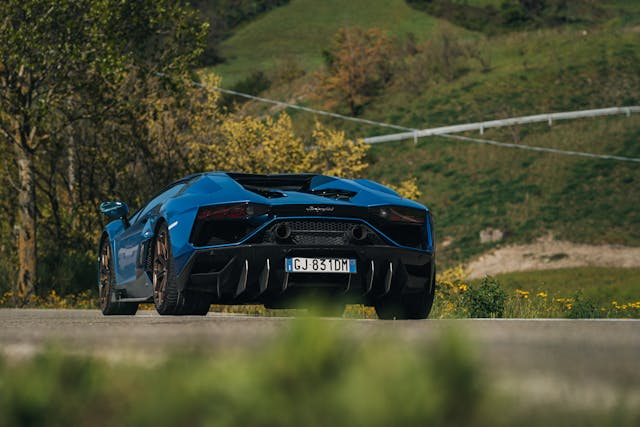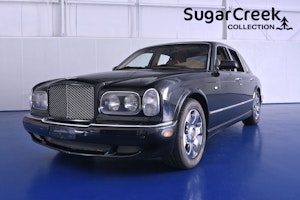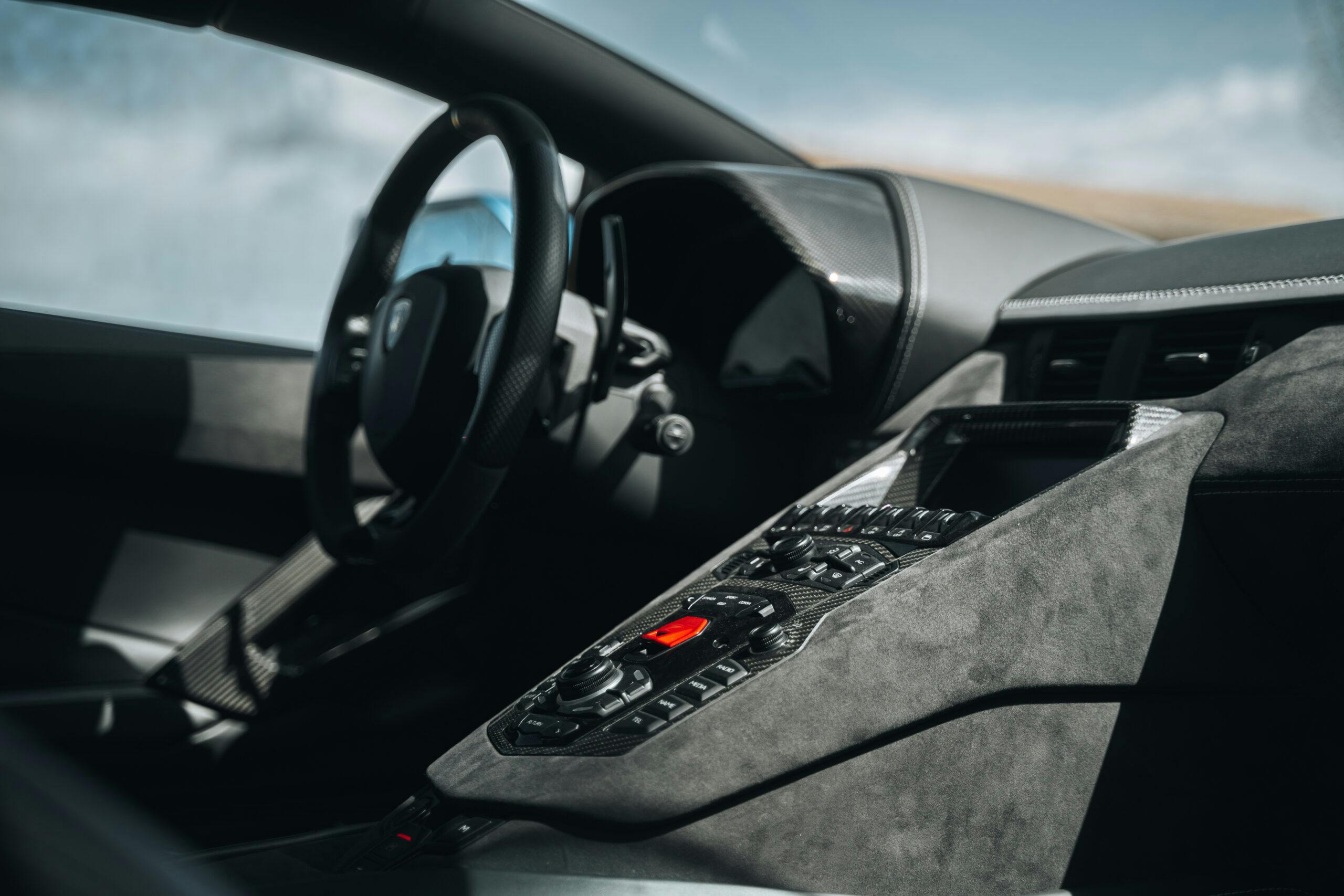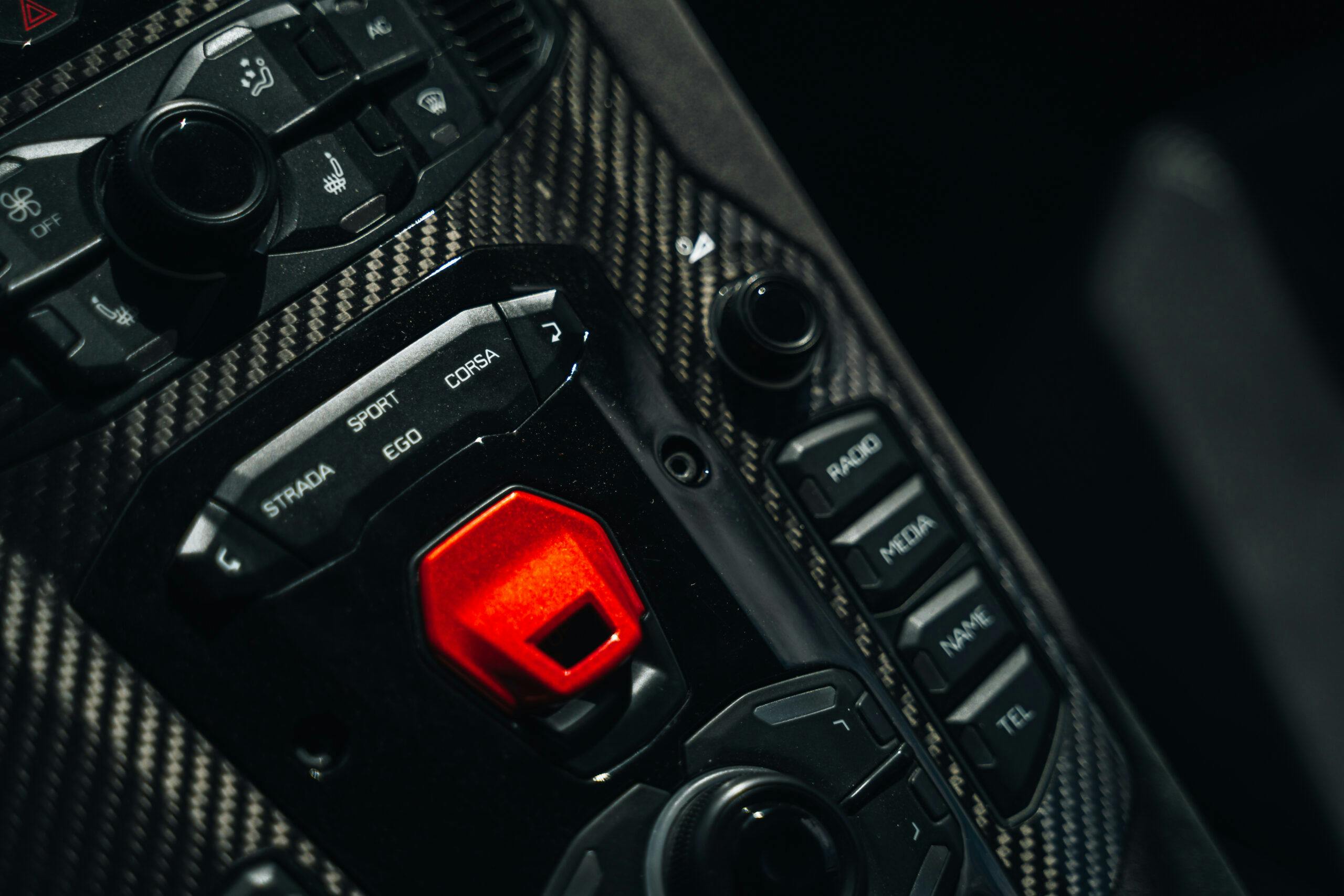Media | Articles
Aventador Ultimae: A sensational V-12 send-off
In the last of his series driving Lamborghini Legends, Hagerty European correspondent Nik Berg samples the final V-12 built before Lamborghini electrifies.
It is the end of an era at Sant’Agata Bologna. No more will any Lamborghini be powered by the undiluted awesomeness of a pure V-12 engine.
That’s not to say the dozen is dead, but from the new Revuelto onwards it will have work in harmony with electricity. There’ll be lower emissions, more power and speed, but also more mass. In due course we’ll discover whether hybridization will amount to character assassination or positive transformation.
As a replacement for the long-lived Aventador, the Revuelto has a tough act to follow. The Aventador was so advanced when it launched in 2011 that, with only minor updates, it has arguably stayed ahead of the supercar curve for more than a decade.
The Aventador was the first Lamborghini to use a carbon-fiber monocoque, with the cockpit, floor, and roof comprised of a “single shell” structure. With front and rear subframes made of aluminum, the entire ensemble weighed just over 500 pounds. Formula 1-style pushrod suspension was another first, and would later be updated with magnetorheological shock absorbers providing an adaptive ride setup.
Marketplace
Buy and sell classics with confidence

The car’s all-wheel drive system deployed a central clutch-based Haldex coupling to distribute power between the front and rear axles. It also came with a sophisticated electronic stability control system branded Lamborghini Dinamica Veicolo Attiva (LDVA – Lamborghini Active Vehicle Dynamics), a robotize manual transmission with seven speeds, and five different drive modes. Later developments would include active aerodynamics, all-wheel steering and, to appease the bureaucrats, both stop-start and cylinder deactivation.
The V-12 heart of the Aventador was the largest and most powerful unit to be fitted to a Lamborghini. At 6498cc it produced 690 hp at 8250 rpm in the earliest models, rising to 780 hp in the very last Ultimae edition.
That car now sits outside the factory on a dark and drizzly morning. What stands before me really is the final example to roll off the production line. The ultimate Ultimae, if you like.

Fundamentally, this Aventador is every bit as jaw-dropping as it was back when it launched. The styling may have had a little surgery here and there—most noticeably the extra carbon aero features at the nose, along the skirts and at the rear diffuser—but it’s a design who stunning effect has not dated one bit. Not pretty, per se, but powerful.
Bronze Leirion forged alloy wheels pop against the bright Blue Tawaret paintwork. I’ve never understood the mindset of a supercar buyer who picks a dark, sober color scheme, as if an Aventador could ever fly under the radar. So this stand-out racing blue is already a winner as far as I’m concerned.
Up swings the scissor door, to reveal a cockpit that mixes leather, Alcantara, and exposed carbon fiber to perfection. It’s perhaps a little dark, but what it does do is draw the eye to the drama of the red-for-danger flip switch for the starter button.
Firing up the Aventador is pure theater. There is no practical reason to hide the engine start button beneath a military-style cover, it just adds to the anticipation.
Anticipation: something that has building up for me since I first received an invitation to celebrate Lamborghini’s 60th anniversary by driving its most legendary cars. Although this is the last of that series of stories published here, the Aventador is actually the first car I get to drive.
The inclement wet weather is a precursor to the horrific floods that would hit the Emilia-Romagna region a week later, and, even with all-wheel drive, the prospect of unleashing 780 hp on damp roads is intimidating.
So, too, is the sheer size of the Aventador. It’s not the length that’s the issue but simply the width. The car’s girth appears to consume every inch of the single-track road that leads away from Sant’Agata to Manzolino. Fortunately, there’s a lead car, an Urus SUV, clearing the path—or at least warning me of oncoming traffic over a walkie-talkie. Even so, I definitely wince as farm vehicles squeeze past.
One consolation is that in the Strada drive mode, which defaults to automatic shifts, I don’t need to worry about working the paddles for the first few miles while I get accustomed to the Aventador’s beefy dimensions.
As I hit alpine route SP27 I gain a bit of road width once more, the first opportunity for our caravan of six V-12s and two V-10s to open up. I’m behind all the older V-12s and, even leaving a large gap, every dab of the accelerator hurls me towards the back of the Murciélago ahead. This is a car capable of reaching 62 mph from rest in 2.8 seconds and 124 mph in 8.7. On backroads like these it’s impossible to exploit its potential, yet it’s somewhere between exciting and utterly terrifying having a go.
That dance, I guess, is the whole point of a V-12 Lamborghini.

As I look back now, having had time behind the wheel of its legendary predecessors—the 400GT, Miura, Countach, and Diablo—what’s most amazing about the Aventador is its split personality. In its most docile driving mode you could cruise comfortably for vast distances, lulled into a false sense of security by just how simple it is to drive, leaving aside the sheer size of it. Yet with the toggle of a switch or two and a hard press of the accelerator it transforms instantly into the furious tail-whipping beast depicted on the Lamborghini badge.
The Revuelto, with its silent-running electric mode, will perhaps make this metamorphosis even more mind-blowing. Here’s hoping I won’t have to wait another 60 years to find out for certain.

***
Check out the Hagerty Media homepage so you don’t miss a single story, or better yet, bookmark it. To get our best stories delivered right to your inbox, subscribe to our newsletters.




















I will miss the pure V-12 sounds in the future.
I have to ask: how much? I already know I can’t afford it, but, you know, for dollar-per-horsepower comparison with what I have. 😁
Fun for museums. Don’t see much point as a driver.